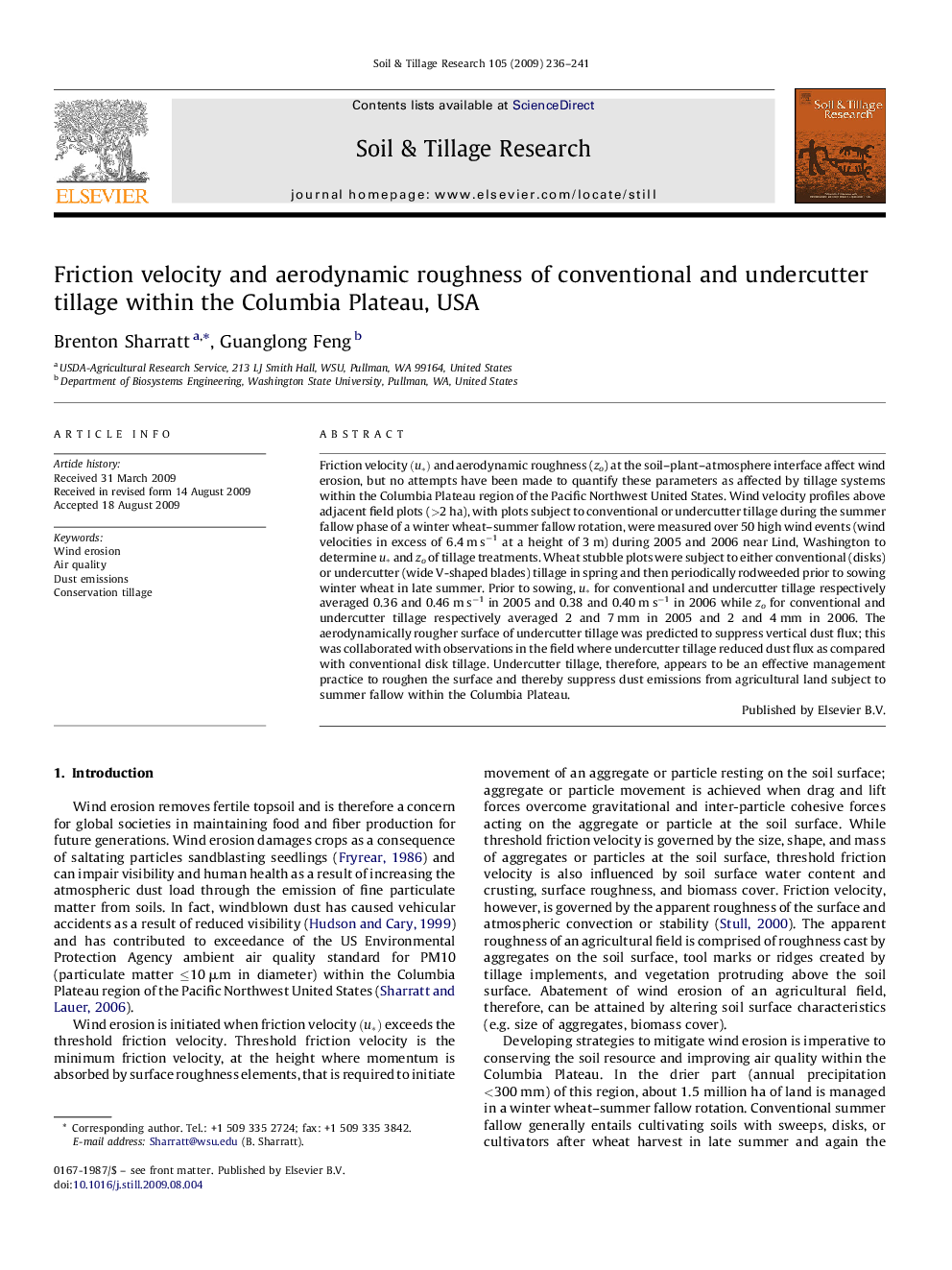| Article ID | Journal | Published Year | Pages | File Type |
|---|---|---|---|---|
| 306245 | Soil and Tillage Research | 2009 | 6 Pages |
Friction velocity (u*)(u*) and aerodynamic roughness (zo) at the soil–plant–atmosphere interface affect wind erosion, but no attempts have been made to quantify these parameters as affected by tillage systems within the Columbia Plateau region of the Pacific Northwest United States. Wind velocity profiles above adjacent field plots (>2 ha), with plots subject to conventional or undercutter tillage during the summer fallow phase of a winter wheat–summer fallow rotation, were measured over 50 high wind events (wind velocities in excess of 6.4 m s−1 at a height of 3 m) during 2005 and 2006 near Lind, Washington to determine u*u* and zo of tillage treatments. Wheat stubble plots were subject to either conventional (disks) or undercutter (wide V-shaped blades) tillage in spring and then periodically rodweeded prior to sowing winter wheat in late summer. Prior to sowing, u*u* for conventional and undercutter tillage respectively averaged 0.36 and 0.46 m s−1 in 2005 and 0.38 and 0.40 m s−1 in 2006 while zo for conventional and undercutter tillage respectively averaged 2 and 7 mm in 2005 and 2 and 4 mm in 2006. The aerodynamically rougher surface of undercutter tillage was predicted to suppress vertical dust flux; this was collaborated with observations in the field where undercutter tillage reduced dust flux as compared with conventional disk tillage. Undercutter tillage, therefore, appears to be an effective management practice to roughen the surface and thereby suppress dust emissions from agricultural land subject to summer fallow within the Columbia Plateau.
